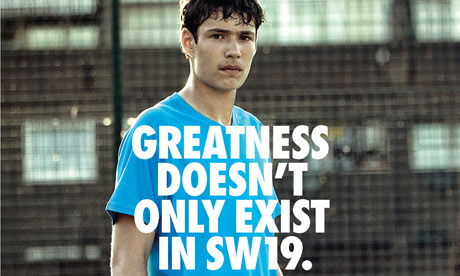Every Olympic Games presents the opportunity for brands to strut their best in order to garner the attention of millions of people. With over 219 million Americans tuning in, the 2012 London Olympics became the most-watched event ever in United States TV history.

Nike edges past Adidas in this event
Knowing this, it should come as little surprise that brands were willing to shell out top dollar for a spot as an official sponsor of the games. Adidas, for example, paid close to $60 million for their official sponsorship status. One would think this much money would certainly pay off right? Think again. In an article I recently read on AdAge, 37% of respondents in a Toluna Global Omnibus (TGO) survey mistakenly identified Nike as an official sponsor of the games, whereas only 24% of respondents correctly identified Adidas as an Olympic sponsor. Nike didn’t pay a dime to the International Olympic Committee or the London Organizing Committee of the Olympic Games, and yet they still managed to reap the benefits from the event. How did they do this you ask?
Over the years, Nike has been no stranger to ambush marketing, a strategy where brands capitalize on a marquee event by associating themselves with it, without paying a sponsorship fee. Nike decided to launch “Find Your Greatness,” a global ad campaign via YouTube specifically designed to coincide with the start of the London Olympics. This ambush marketing campaign features videos of everyday athletes in towns and cities around the world named “London.” Take a look for yourself.
In an attempt to “cash in” on the Olympic frenzy this past summer, they subliminally linked their brand to the name of the city which just so happened to be hosting the biggest sporting event of the year. In addition to their series of videos, the campaign was also fueled by a #findgreatness hashtag via Twitter, and various billboards located within Great Britain.

One of Nike’s many billboards displayed during the Olympic Games. This one in particular references Wimbledon, where Olympic Tennis took place.
Although this campaign was brilliant on Nike’s part, it’s also important to keep in mind how they succeeded in pulling this off. It’s interesting to note that (prior to the Olympics) according to Forbes’ athletic footwear brand Customer Loyalty Index, Nike ranked 2nd, and Adidas 5th in customer loyalty and engagement. So maybe the results of TGO’s survey should come as no surprise seeing that Nike’s brand was already considered more powerful than Adidas’ before the games even started. It makes me question, was Adidas’ sponsorship of the Olympic Games worth it? Maybe Nike’s ambush marketing campaign wasn’t necessary at all. Maybe their brand awareness is so superior to Adidas’ that they would’ve gotten recognition regardless. Maybe Adidas should have anticipated this and spent that $60 million elsewhere. Even though I wasn’t aware of their “Find Your Greatness” campaign, I for one thought (or maybe assumed) that Nike was an official Olympic sponsor. Then again, it definitely didn’t hurt their cause.
Perhaps, it’s time to introduce marketing as a new sport for Olympic competition

 Search engine optimization, or SEO for short, is a way of increasing the attention your website gets in a search engine’s results. Simply put, the higher up and more frequent times your site appears on a search engine list, the better, as it increases its number of views. Here are 2 key takeaways that are bound to help you in both SEO and your fantasy sports teams.
Search engine optimization, or SEO for short, is a way of increasing the attention your website gets in a search engine’s results. Simply put, the higher up and more frequent times your site appears on a search engine list, the better, as it increases its number of views. Here are 2 key takeaways that are bound to help you in both SEO and your fantasy sports teams.